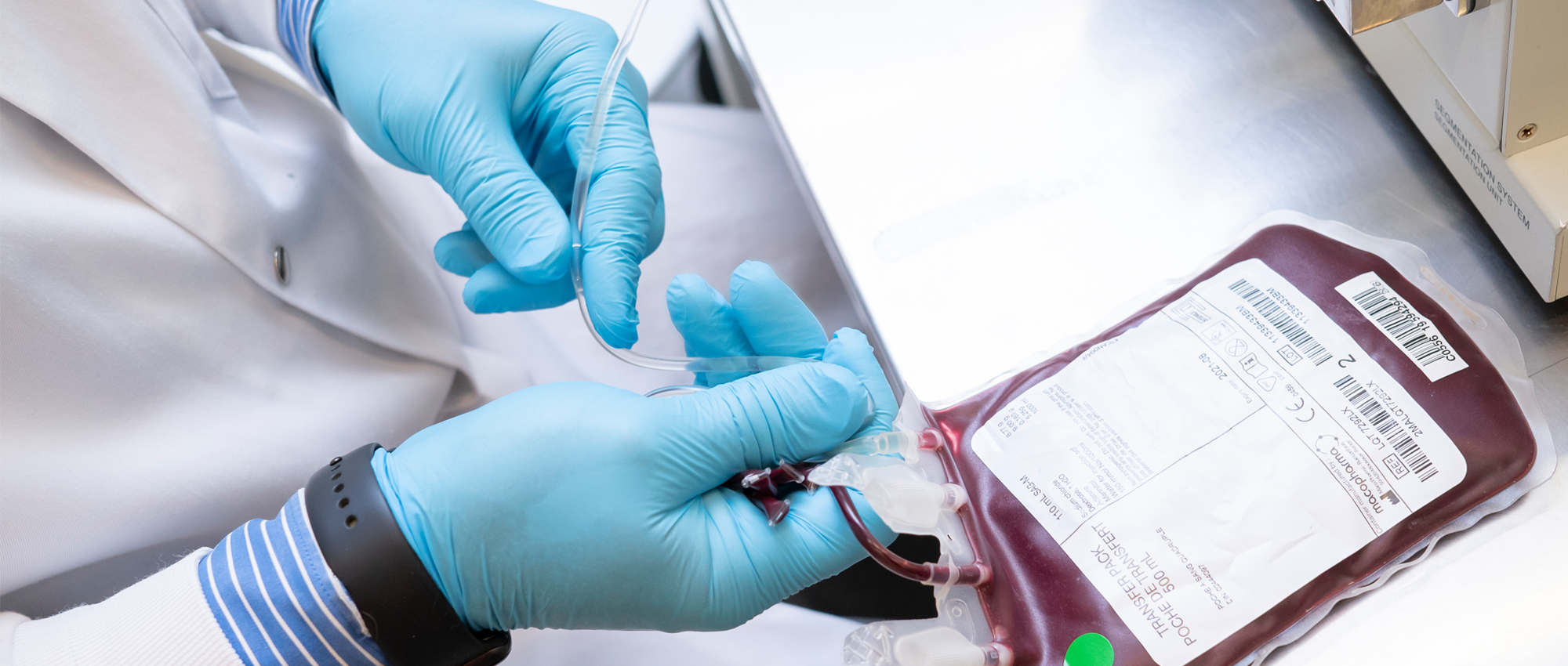Treat the bleed: Practical guidance for physicians developed by leaders in transfusion medicine

Thanks to a collaboration among Canada’s leading experts in transfusion medicine, front-line physicians can access Treat the Bleed, a new website that supports clinical decision making in the management of bleeding. The content is presented in a practical and user-friendly format: top questions on three topics (warfarin reversal, direct oral anticoagulants (DOACs), and massive hemorrhage protocol) are answered in concise text using plenty of infographics
We spoke with one of the contributing experts, Dr. Andrew Shih, medical director and regional medical leader in transfusion medicine at the Vancouver Coastal Health Authority, to find out more why he thinks all front-line physicians should know about this resource.

Why was it important to create this website?
The idea of developing a platform for front-line physicians focused on the treatment of bleeding patients started because we knew that, across Canada, different practices occur in bleeding management. However, transfusion medicine and hematology experts agree on many practices that we felt were important to relay to front-line physicians. Learning about these topics—for example how to reverse drugs like warfarin (an anticoagulant or blood thinner)—tends to happen at the resident level. And as a resident, much of what you learn is experiential, so you are somewhat dependent on the people you’re working with to have a knowledge base or you’re depending on the fact that during your residency you’ll see certain types of cases. So it’s not a guarantee that people who have gone through their medical training have learned a lot about management of bleeding, and especially management of bleeding with anticoagulants on board.
We recognized the knowledge gaps and our hope is that the guidance on the website can help standardize and improve care for patients across the country. For full disclosure, the site is sponsored by Octapharma Canada, though the content is driven independently by content experts.
Can you highlight some key takeaways for each topic?
We started off with warfarin reversal as we knew practices are varied across Canada, yet there’s pretty much universal agreement across the board on this: prothrombin complex concentrates (PCCs, a medication made up of blood clotting factors) as a short-term therapy plus vitamin K given by intravenous dose as an actual antidote—a reversal agent to counteract the effects of the drug—are the standard of care. And frozen plasma should never be used except for very particular circumstances.
One of the reasons we felt the need to provide guidance on DOACs is because there is no specific antidote widely available in Canada yet for one category of DOACs, the factor Xa inhibitors. In the absence of a specific antidote, the literature suggests that prothrombin complex concentrates are reasonable to use in bleeding patients given no true alternatives. If a bleeding patient who is on DOACs comes in, having this guidance readily available helps ensure they will receive effective therapy to try and stop the bleeding and prevent them from receiving an inappropriate therapy such as transfusion of frozen plasma, or even no treatment.
For the massive hemorrhage protocol (MHP), I think the biggest take-home message is that what really saves patients is having a good protocol in place with clear roles and responsibilities for all members of an interdisciplinary team. When people think about MHPs, they often focus on what blood products to give, but they should also think about who is part of the team and how do they perform as a team once the protocol is triggered?
Can you provide an example of how Treat the Bleed helps ensure appropriate use of blood products?
When I was a transfusion trainee in my practice, a high proportion of warfarin reversal was still happening with frozen plasma. Now we know that’s not the standard of care; all transfusion experts would agree that PCCs are considered the standard of care when reversing warfarin.
One of the things we really wanted to achieve with this website is to create a resource that a physician can look up on quickly on their phone if they have a bleeding patient in front of them—not just to ensure appropriate blood utilization, but also to improve patient outcomes.
Does the guidance include anything new?
The way we use infographics is a new way to show best practices, which works really well for front-line physicians who need a quick reference. We spent a lot of time working with graphic designers to really fine-tune them because we suspect they will be consulted more than the text.
Is the website useful for other types of health-care providers too?
I do think it’s a potentially useful resource for other health-care providers, such as medical lab technologists and nurses, because it raises awareness about why we do certain things. It also gives other health-care providers an understanding of what the transfusion medicine world considers to be best practice when it comes to reversing warfarin, DOACs, or using MHPs.
Canadian Blood Services – Driving world-class innovation
Through discovery, development and applied research, Canadian Blood Services drives world-class innovation in blood transfusion, cellular therapy and transplantation—bringing clarity and insight to an increasingly complex healthcare future. Our dedicated research team and extended network of partners engage in exploratory and applied research to create new knowledge, inform and enhance best practices, contribute to the development of new services and technologies, and build capacity through training and collaboration. Find out more about our research impact.
The opinions reflected in this post are those of the author and do not necessarily reflect the opinions of Canadian Blood Services nor do they reflect the views of Health Canada or any other funding agency.